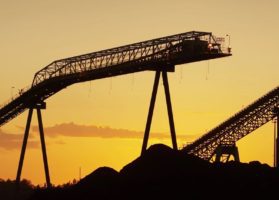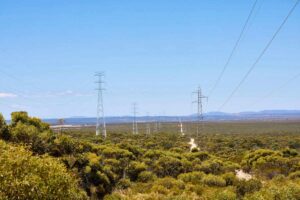This is part 2 of a five part series of articles examining the four accounting tricks that the Liberal-National Party employed in the costing of its energy plan to slow the roll-out of renewables and rely instead on nuclear power. The first article, which provides the overarching context is published here.
These four accounting tricks act to mislead voters that the Liberal-National Party could lower energy bills through a shift to nuclear when in reality it is likely to increase power bills.
This article focuses on accounting trick one of four: Assume a cost for nuclear reactors which is around half what nuclear reactors have actually cost to build across Europe and North America.
The most important point you need to understand is that the unit cost of energy the Liberal-National Party claims its future nuclear-underpinned power system will deliver – about $80 per megawatt-hour – is unrealistically low.
More realistic cost assumptions for nuclear would inflate the modelled cost of their system per MWh to $141.50 per MWh which is two-thirds higher than what they’ve estimated for the Labor Party scenario.
The Liberal-National Party’s costing has assumed that a nuclear reactor built today in Australia would cost $10,000 per kilowatt of capacity and that cost would decline by 1% per annum. The costing also assumes the first reactors would commence operation in 2036 followed by a rapid scale-up from 2039.
This is far below the real-world construction cost experience of nuclear reactors across Europe and North America in the past 20 years. This experience is detailed in a report I co-authored with energy analyst Johanna Bowyer from the Institute for Energy Economics and Financial Analysis – Nuclear in Australia would increase household power bills.
The table below lists the costs per kilowatt of plants which have proceeded to construction or managed to get to the point of a contracted price. Importantly you need to consider both the actual price paid to construction contractors (known as the ‘overnight cost’ – the cost if the project could literally be built within a night), but also a range of costs incurred by the owner in building the plant such as financing, known as the ‘all-in costs’.
These owner-incurred costs are very large, mainly because construction takes a long time and leads to significant bank debt interest bill accumulating over this period. The Liberal-National’s costing report does not explain what construction period it assumes for nuclear plants, which is a major black hole in their costing.

For a nuclear reactor with an all in cost of almost $29,000 per kilowatt to recover a commercial financing cost of 6% it would need to capture an electricity price close to $260 per MWh, and that’s if it could operate close to its full capacity without ramping down around solar generation.
If we multiply that out by the amount of electricity nuclear is expected to generate under the Liberal-National Party scenario, that gives us an annualised cost just for the nuclear component of their power system of $27 billion in 2051. We then need to add on top of that the costs to provide the remaining 60% or so of electricity not provided by nuclear.
Unfortunately, the inadequate transparency of the consultant’s report makes it difficult to disentangle these costs. Using the limited data the consultant has provided these non-nuclear costs appear to roughly lie somewhere around $8 to $10 billion.
So, if we use more realistic nuclear costs and then take the mid point for the non-nuclear costs of $9 billion, we end up with a total annualised cost of $36 billion for the complete system in 2051.
This is $7.5 billion higher than what the consultant estimates for the Labor scenario in 2051. It gives us an averaged cost per MWh of around $141.50, which is around two-thirds higher cost per MWh than the Labor scenario.
The Coalition likes to claim that the costs from these real-world nuclear power plant projects are somehow not relevant. This is because they claim they will be ordering nuclear plants several years in the future after the nuclear industry has had the chance to improve on what have been some shocking project cost blow outs.
There are just two fundamental problems with this.
The first is that the nuclear industry in the western world has tended to experience escalating, not declining costs over time. UK’s next planned nuclear project Sizewell C will represent the fifth and sixth European Pressurised Reactor (EPR) design built by French corporate entities.
The latest cost reported by the UK’s Financial Times suggests it will cost around two and half times what the Coalition costing assumes at $24,540 per kW. That’s substantially more expensive than the first EPR they built in Finland – Olkiluoto 3.
The second problem is that for the Coalition to have any chance of meeting its time frame for the roll-out of nuclear it would have to commence the nuclear procurement process immediately. It won’t be able to wait for the nuclear industry to achieve what would amount to some incredible cost breakthroughs.
To explain why it is helpful to look at the Czech Republic experience, where they just very recently completed a nuclear tender process. The tender commenced in 2022 (preparation leading into the tender such as permitting and environmental impact assessments for the reactor site began several years before that but let’s leave that to one side).
Two years later they had selected the winner, being Korean Hydro and Nuclear Power. Yet Korean Hydro and Nuclear Power won’t be able to actually commence the real construction work until 2029. That’s because nuclear power plants are very complex, from both a physical and commercial perspective, and require considerable preparatory work. From there, they don’t expect the nuclear power plant to be fully operational until 2038. Note that this is for a site where preexisting nuclear power plants are already in place with all the associated supporting infrastructure that entails.
So, realistically, if the Coalition wanted to achieve the timelines outlined in its modelling, it really needed to commence the nuclear procurement tender process back several years ago when it was previously in government. It has no time available to wait around for the nuclear industry to come up with the cost breakthroughs its costing relies upon.
Tristan Edis is director of analysis and advisory at Green Energy Markets. Green Energy Markets provides analysis and advice to assist clients make better informed investment, trading and policy decisions in energy and carbon abatement markets.






